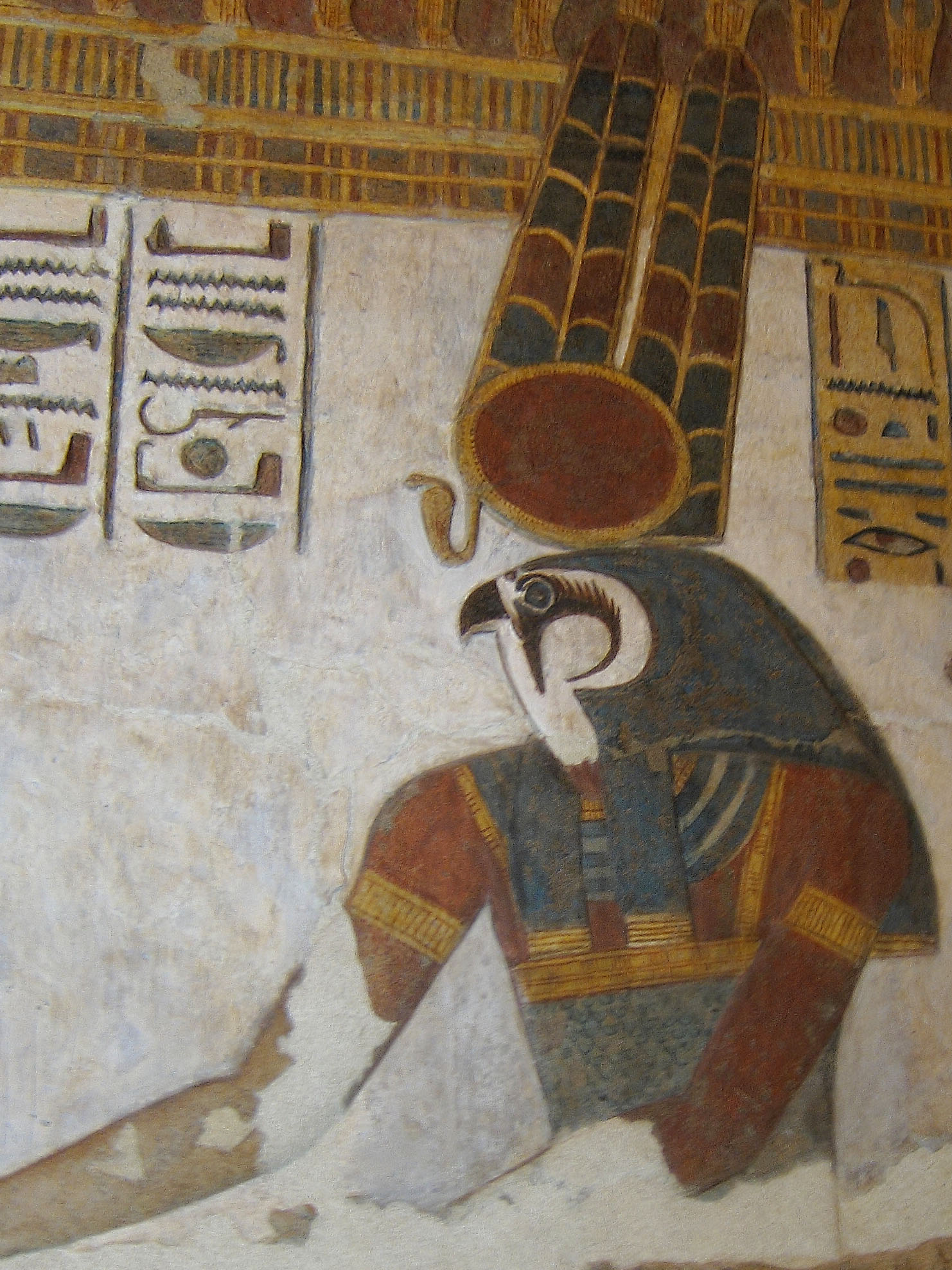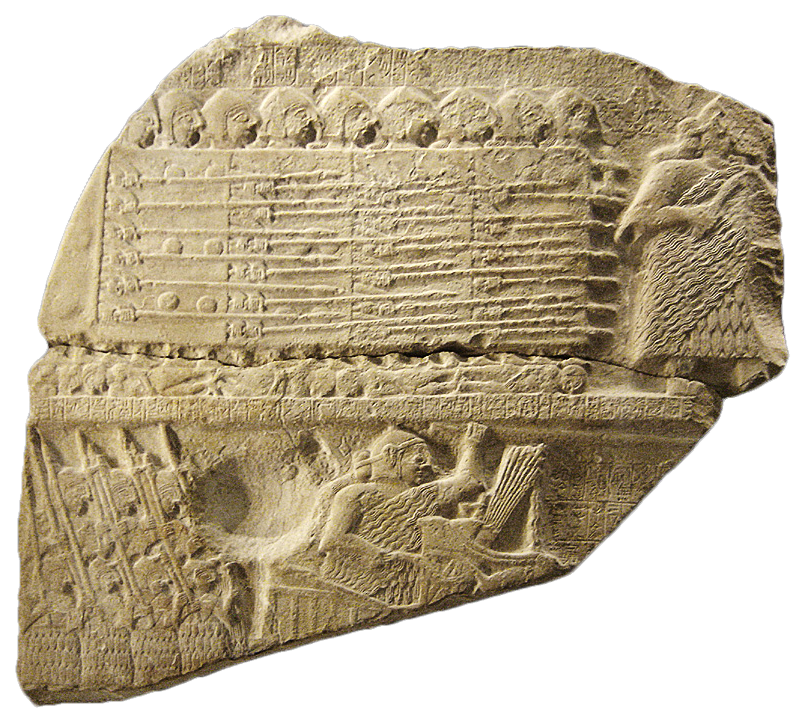|
Mandou
Montu was a falcon-god of war in the ancient Egyptian religion, an embodiment of the conquering vitality of the pharaoh.Hart, George, ''A Dictionary of Egyptian Gods and Goddesses'', Routledge, 1986, . p. 126. He was particularly worshipped in Upper Egypt and in the district of Thebes.Rachet, Guy (1994). ''Dizionario della civiltà egizia''. Rome: Gremese Editore. . p. 208. Name Montu's name, shown in Egyptian hieroglyphs to the right, is technically transcribed as ''mntw'' (meaning "Nomad"). Because of the difficulty in transcribing Egyptian vowels, it is often realized as Mont, Monthu, Montju, Ment or Menthu. Role and characteristics A very ancient god, Montu was originally a manifestation of the scorching effect of Ra, the sun – and as such often appeared under the epithet Montu-Ra. The destructiveness of this characteristic led to him gaining characteristics of a warrior, and eventually becoming a widely revered war-god. The Egyptians thought that Montu would attack ... [...More Info...] [...Related Items...] OR: [Wikipedia] [Google] [Baidu] |
El-Tod
El-Tod ( , from , , , ) was the site of an ancient Egyptian town and a temple to the Ancient Egyptian religion, Egyptian god Montu. It is located southwest of Luxor, Egypt, near the settlement of Hermonthis. A modern village now surrounds the site. History The history of the site can be traced to the Old Kingdom of Egypt, Old Kingdom period of Egyptian history. A granite pillar of the Fifth dynasty of Egypt, Fifth dynasty pharaoh, Userkaf, is the oldest object found at El-Tod. It was this same pharaoh who ordered that the temple to Montu be enlarged. Evidence of Eleventh dynasty of Egypt, Eleventh dynasty building is shown in the discovery of blocks bearing the names of Mentuhotep II and Mentuhotep III. Under Senwosret I, these buildings were replaced with a new temple. Further additions to this temple were made under Ptolemy VIII Physcon, Ptolemy VIII. Culture Aside from Montu, to whom a temple was dedicated, the Egyptian goddess Iunit was of local importance. According to Fl ... [...More Info...] [...Related Items...] OR: [Wikipedia] [Google] [Baidu] |
Armant, Egypt
Armant (; or ''jwn.w-šmꜥ.w''; Bohairic: ; Sahidic: ), also known as Hermonthis (), is a town located about south of Thebes. It was an important Middle Kingdom town, which was enlarged during the Eighteenth Dynasty. It is located today in the Luxor Governorate on the west bank of the Nile. The ruined Temple of Hermonthis (sometimes Temple of Monthu) sits in the middle of the modern town. History The Ancient Egyptian name for the city meant "the Heliopolis of Montu", an Egyptian god whose root of name means "nomad". Montu was associated with raging bulls, strength and war. He was also said to manifest himself in a white bull with a black face, which was referred to as the Bakha. Egypt's greatest general-kings called themselves Mighty Bulls, the sons of Montu. In the famous narrative of the Battle of Kadesh, Ramesses II was said to have seen the enemy and "raged at them like Montu, Lord of Thebes". A temple dedicated to Montu existed at Hermonthis as early as the ... [...More Info...] [...Related Items...] OR: [Wikipedia] [Google] [Baidu] |
Atum
Atum (, Egyptian: ''jtm(w)'' or ''tm(w)'', ''reconstructed'' ; Coptic ''Atoum''), sometimes rendered as Atem, Temu, or Tem, is the primordial God in Egyptian mythology from whom all else arose. He created himself and is the father of Shu and Tefnut, the divine couple, who are the ancestors of the other Egyptian deities. Atum is also closely associated with the evening sun. As a primordial god and as the evening sun, Atum has chthonic and underworld connections. Atum was relevant to the ancient Egyptians throughout most of Egypt's history. He is believed to have been present in ideology as early as predynastic times, becoming even more prevalent during the Old Kingdom and continuing to be worshiped through the Middle and New Kingdom, though he becomes overshadowed by Ra around this time. Name Atum's name is thought to be derived from the verb ''tm'' which means 'to complete' or 'to finish'. Thus, he has been interpreted as being the "complete one" and also the finisher ... [...More Info...] [...Related Items...] OR: [Wikipedia] [Google] [Baidu] |
Mentuhotep II
Mentuhotep II (, meaning "Mentu is satisfied"), also known under his Prenomen (Ancient Egypt), prenomen Nebhepetre (, meaning "The Lord of the rudder is Ra"), was an ancient Egyptian pharaoh, the sixth ruler of the Eleventh Dynasty of Egypt, Eleventh Dynasty. He is credited with reuniting Egypt, thus ending the turbulent First Intermediate Period and becoming the first pharaoh of the Middle Kingdom of Egypt, Middle Kingdom. He reigned for 51 years, according to the Turin King List. Mentuhotep II succeeded his father Intef III on the throne and was in turn succeeded by his son Mentuhotep III. Mentuhotep II ascended Egypt's throne in the Upper Egyptian city of Thebes, Egypt, Thebes during the First Intermediate Period. Egypt was not unified during this time, and the Tenth Dynasty of Egypt, Tenth Dynasty, rival to Mentuhotep's Eleventh, ruled Lower Egypt from Heracleopolis Magna, Herakleopolis. After the Herakleopolitan kings desecrated the sacred ancient Umm El Qa'ab, royal necropo ... [...More Info...] [...Related Items...] OR: [Wikipedia] [Google] [Baidu] |
Mentuhotep I
Mentuhotep I (also Mentuhotep-aa, i.e. "the Great") may have been a Theban nomarch and independent ruler of Upper Egypt during the early First Intermediate Period. Alternatively, Mentuhotep I may be a fictional figure created during the later Eleventh Dynasty, which rose to prominence under Intef II and Mentuhotep II, playing the role of a founding father. Identity Mentuhotep was possibly a local Egyptian nomarch at Thebes during the early first intermediate period, ca. 2135 BC. The Karnak king list found in the Festival Hall of Thutmose III preserves, in position No. 12, the partial name "Men-" in a royal cartouche, distinct from those of Mentuhotep II (No. 29) or Mentuhotep III (No. 30). The available fragments of the Karnak list do not seem to represent past pharaohs in any chronological order, and thus one cannot ascertain if or when this "Men-" pharaoh lived. Many scholars have argued from the list that a Mentuhotep I, who might have been merely a Theban nomarch, was posthu ... [...More Info...] [...Related Items...] OR: [Wikipedia] [Google] [Baidu] |
11th Dynasty
The Eleventh Dynasty of ancient Egypt (notated Dynasty XI; ) is a well-attested group of rulers. Its earlier members before Pharaoh Mentuhotep II are grouped with the four preceding dynasties to form the First Intermediate Period, whereas the later members are considered part of the Middle Kingdom. They all ruled from Thebes in Upper Egypt. Characteristics The relative chronology of the 11th Dynasty is well established by contemporary attestations and, except for count Intef and Mentuhotep IV, by the Turin canon.mirror Manetho's statement that the 11th Dynasty consisted of 16 kings, who reigned for 43 years is contradicted by contemporary inscriptions and the evidence of the Turin King List, whose combined testimony establishes that this kingdom consisted of seven kings who ruled for a total of 143 years. However, his testimony that this dynasty was based at Thebes is verified by the contemporary evidence. It was during this dynasty that all of ancient Egypt was united under ... [...More Info...] [...Related Items...] OR: [Wikipedia] [Google] [Baidu] |
New Kingdom Of Egypt
The New Kingdom, also called the Egyptian Empire, refers to ancient Egypt between the 16th century BC and the 11th century BC. This period of History of ancient Egypt, ancient Egyptian history covers the Eighteenth Dynasty of Egypt, Eighteenth, Nineteenth Dynasty of Egypt, Nineteenth, and Twentieth Dynasty of Egypt, Twentieth dynasties. Through radiocarbon dating, the establishment of the New Kingdom has been placed between 1570 and 1544 BC. The New Kingdom followed the Second Intermediate Period of Egypt, Second Intermediate Period and was succeeded by the Third Intermediate Period of Egypt, Third Intermediate Period. It was the most prosperous time for the Egyptians#History, Egyptian people and marked the peak of Egypt's power. In 1845, the concept of a "New Kingdom" as Periodization of ancient Egypt, one of three "golden ages" was coined by German scholar Christian Charles Josias von Bunsen; the original definition would evolve significantly throughout the 19th and 20th ... [...More Info...] [...Related Items...] OR: [Wikipedia] [Google] [Baidu] |
Khopesh
The ''khopesh'' ('; also vocalized khepesh) is an Egyptian sickle-shaped sword that developed from battle axes. The sword style originated in Western Asia during the Bronze Age and was introduced in the Second Intermediate Period.Lloyd, Alan B. ''A Companion to Ancient Egypt''. Spalinger, Anothony J. Ch 23. "Military Institutions and Warfare: Pharaonic". Newark, United Kingdom: John Wiley & Sons, 2010.Van De Mieroop, Marc. ''A History of Ancient Egypt''. John Wiley & Sons, 2021. p. 126. The ''khopesh'' became more common in the New Kingdom, and is often depicted with kings in statues and murals. Etymology The word ''khopesh'' may have been derived from "leg", as in "leg of beef", because of their similarity in shape. The hieroglyph for ''ḫpš'' ('leg') is found as early as during the time of the Coffin Texts (the First Intermediate Period). Coffin Texts: However, on the 196 BC Rosetta Stone, it is referenced as the "sword" determinative in a hieroglyph block, with t ... [...More Info...] [...Related Items...] OR: [Wikipedia] [Google] [Baidu] |
Uraeus
drawing of a Uraeus The Uraeus () or Ouraeus (Ancient Greek: , ; Egyptian: ', "rearing cobra", plural: ''Uraei'') is the stylized, upright form of an Egyptian cobra, used as a symbol of sovereignty, royalty, deity and divine authority in ancient Egypt. Symbolism The Uraeus is a symbol for the goddess Wadjet.Egyptian-Gods She was one of the earliest Egyptian deities and was often depicted as a cobra, as she is the serpent goddess. The center of her cult was in Per-Wadjet, later called Buto by the Greeks. She became the patroness of the Nile Delta and the protector of all of Lower Egypt. The pharaohs wore the uraeus as a head ornament: either with the body of Wadjet atop the head, or as a crown encircling the head; this indicated Wadjet's protection and reinforced the pharaoh's claim over the land. In whatever manner that the Uraeus was displayed upon the pharaoh's head, it was, in effect, part of the pharaoh's crown. The pharaoh was recognized only by wearing the Uraeus, whi ... [...More Info...] [...Related Items...] OR: [Wikipedia] [Google] [Baidu] |
Late Period Of Ancient Egypt
The Late Period of ancient Egypt refers to the last flowering of native Egyptian rulers after the Third Intermediate Period in the 26th Saite Dynasty founded by Psamtik I, but includes the time of Achaemenid Persian rule over Egypt after the conquest by Cambyses II in 525 BC as well. The Late Period existed from 664 BC until 332 BC, following a period of foreign rule by the Nubian 25th Dynasty and beginning with a short period of Neo-Assyrian suzerainty, with Psamtik I initially ruling as their vassal. The period ended with the conquests of the Persian Empire by Alexander the Great and establishment of the Ptolemaic dynasty by his general Ptolemy I Soter, one of the Hellenistic diadochi from Macedon in northern Greece. With the Macedonian Greek conquest in the latter half of the 4th century BC, the age of Hellenistic Egypt began. History 26th Dynasty The Twenty-Sixth Dynasty, also known as the Saite Dynasty after its seat of power the city of Sais, reigned from ... [...More Info...] [...Related Items...] OR: [Wikipedia] [Google] [Baidu] |







